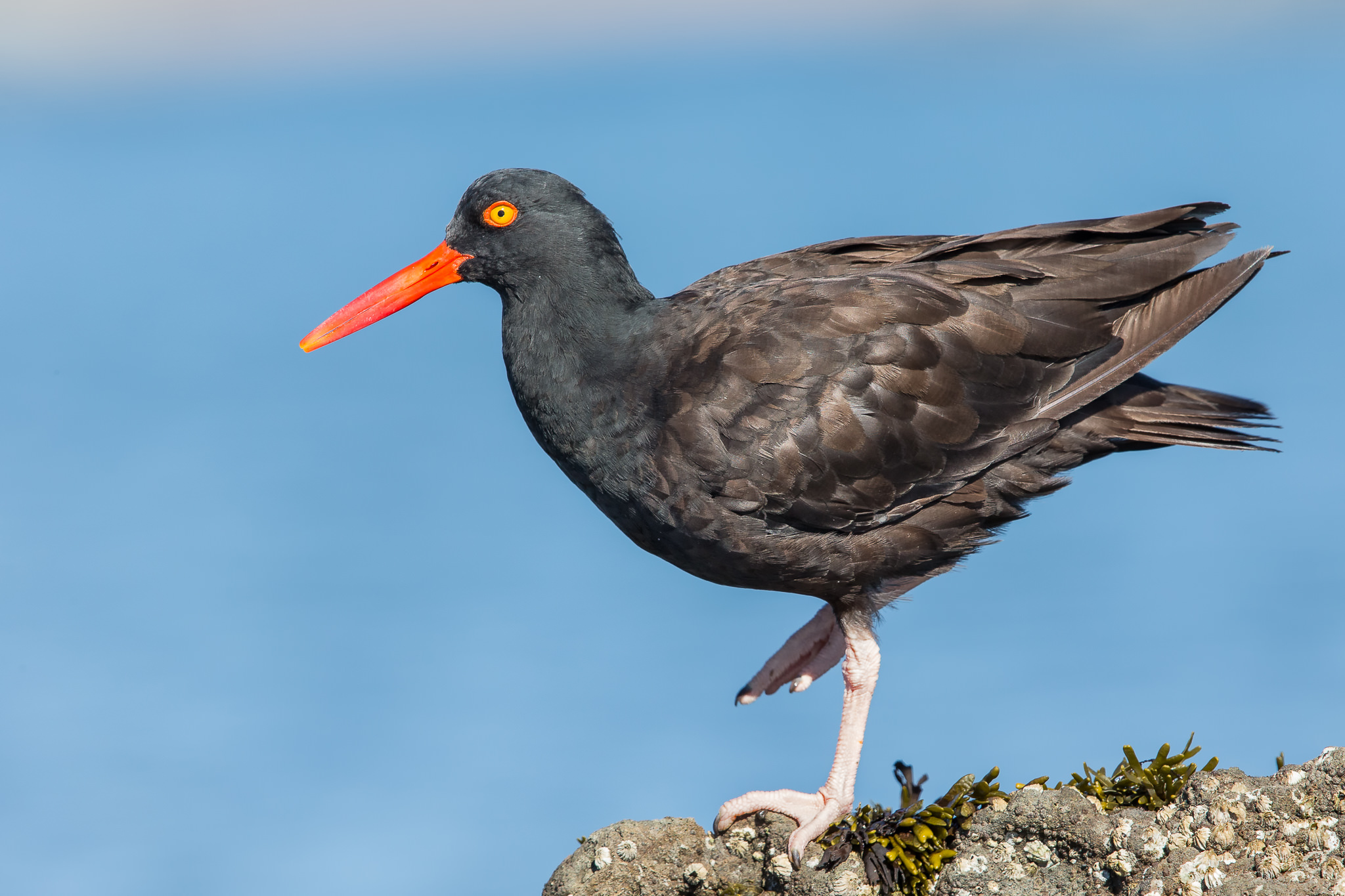The American oystercatcher (Haematopus palliatus), occasionally called the American pied oystercatcher, is a member of family Haematopodidae. The bird is marked by its black and white body and a long, thick orange beak.
The American oystercatcher has distinctive black and white plumage and a long, bright orange beak. The head and breast are black and the back, wings and tail greyish-black. The underparts are white, as are feathers on the inner part of the wing which become visible during flight. The irises are yellow and the eyes have orange orbital rings. The legs are pink. Adults are between 42–52 cm (17–20 in) in length.
The American oystercatcher is found on the Atlantic coast of North America from New England to northern Florida, where it is also found on the Gulf coast, and south to Brazil, Uruguay and Argentina. It is found also in the Pacific coast of California, Mexico, Central America, Peru, and Chile. In the 19th century they became locally extinct in the northeast of the United States due to market hunting and egg collecting. After receiving protection under the Migratory Bird Treaty Act, their range extended northward to re-occupy historical habitat in New England.
Oystercatchers are closely tied to coastal habitats. They nest on beaches on coastal islands and feed on marine invertebrates. The large, heavy beak is used to pry open bivalve mollusks. Oystercatchers raise a clutch of two or three eggs. In winter, they are found in flocks along the coast from central New Jersey to the Gulf of Mexico.


